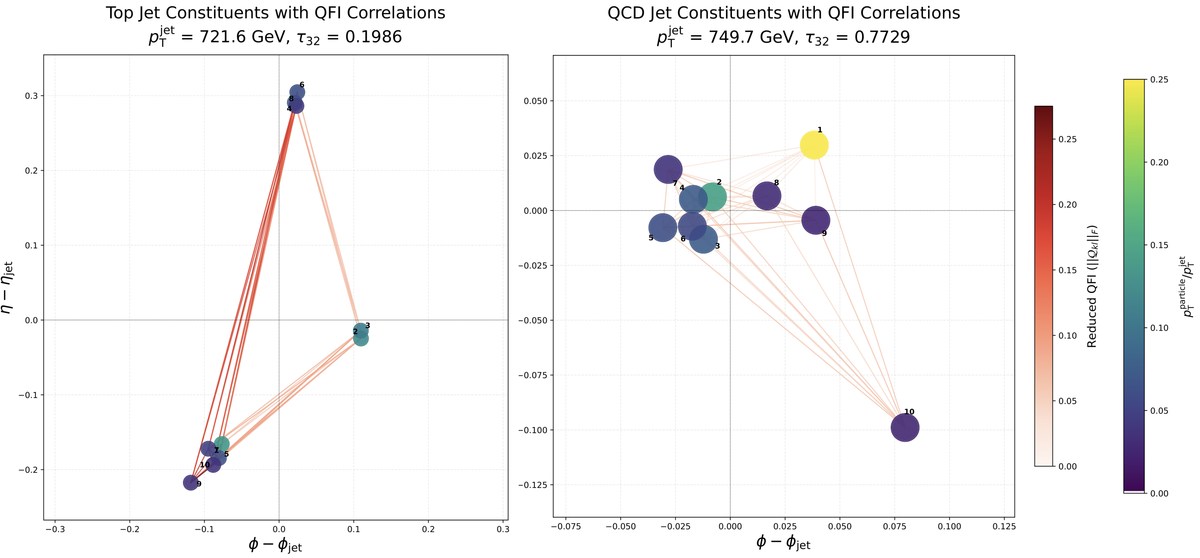Quantum-Informed Neural Networks Offer a New Path to Explainable Artificial Intelligence for Particle Physics
Researchers at the ETP, in collaboration with Imperial College London and Durham University, have introduced Quantum Informed Neural Networks (QINNs): a general framework that uses quantum information and observables to accelerate and enhance classical neural networks. The applicability of this framework is demonstrated for the specific case of jet tagging: an important task for physics analyses at high energy colliders such as the Large Hadron Collider (LHC) at CERN.
Building on their earlier work introducing the “One Particle – One Qubit” (1P1Q) method for encoding jet data on quantum computers, the team showed that the Quantum Fisher Information Matrix (QFIM), a quantity describing how sensitively a quantum state responds to parameter changes, can capture correlations among the particles that make up a jet.
Jets are collimated sprays of hadrons produced when quarks or gluons emerge from high-energy collisions at the Large Hadron Collider (LHC). Understanding their internal structure is essential for testing the Standard Model and searching for new physics. Using a Variational Quantum Classifier (VQC), the researchers showed that the QFIM extracted from a quantum state prepared using the 1P1Q formalism can reveal distinct substructures within jets, allowing for information flow between the components that comprise, for example, the three subjets arising from the hadronic decay of a top quark.
They further showed that the QFIM by itself can serve as a powerful tool for classification. A distance-based classifier initialized with QFIM archetypes is shown to consistently converge faster and more stably than randomly initialized models. Furthermore, when encoded onto the edges of a Graph Neural Network (GNN), where the jet constituent kinematics populate the nodes, the QFIM loads to a considerable improvement in classification accuracy and AUC (area under the ROC curve) as compared to a GNN that uses kinematic information only. This effect is shown to exist without training, as a simple classifier that uses the Mahalanobis distance as a metric of separation, based on mean class prototypes also shows noticeable improvement in performance when the QFIM is used to augment the kinematic inputs in a physics-informed fashion.
This work suggests that the QFIM can act as a compact and physically meaningful alternative to the two-particle correlators used by large transformer-based networks. It opens the door to a new class of Quantum-Informed Neural Networks (QINNs): classical models enhanced by quantum-derived information.
The study was led by Dr. Aritra Bal at the ETP, in the group of Prof. Dr. Markus Klute, in collaboration with Prof. Michael Spannowsky (Durham University) and Dr. Benedikt Maier (Imperial College London).
The results are available as a preprint on arXiv, and are currently undergoing peer-review for publication in a journal.
Contact: Dr. Aritra Bal


